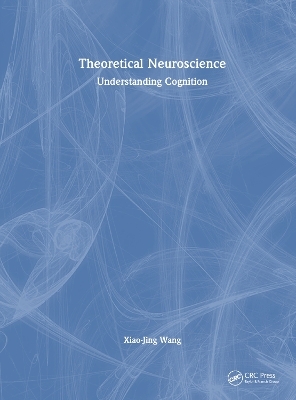
Theoretical Neuroscience
CRC Press (Verlag)
978-1-032-60482-4 (ISBN)
- Noch nicht erschienen (ca. Januar 2025)
- Versandkostenfrei innerhalb Deutschlands
- Auch auf Rechnung
- Verfügbarkeit in der Filiale vor Ort prüfen
- Artikel merken
This textbook is an introduction to systems and computational neuroscience with a special focus on cognition. It consists of three parts: Part I covers basic concepts and mathematical models of computational neuroscience, as well as cutting-edge topics. Part II is dedicated to building blocks of cognition: working memory (how our brain maintains and manipulates information “online” in the absence of any external input), decision making (how a choice is selected among multiple options under uncertainty and risk) and behavioral flexibility (how we direct our attention and control our actions). In Part III, frontier research is discussed: models of large-scale multi-regional brain systems, computational psychiatry, interface with artificial intelligence. The author emphasizes the viewpoint of neural circuits as dynamical systems, and cross-level (from genes and cell types to collective neural populations to behavior) mechanistic understanding of the brain and the mind. Taken together, a reader is offered the opportunity to become well versed in this highly cross-disciplinary field of the twenty-first century.
Key Features
Rooted in the most recent advances in experimental studies of basic cognitive functions
Introduces neurobiological and mathematical concepts so that the book is self-contained
Heavily illustrated with high-quality figures that help to illuminate neurobiological concepts, present experimental findings and explain mathematical models
Concludes with a list of core cognitive behavior tasks, ten take-home messages and three open questions for future research
Computer model codes are available via GitHub for hands-on practice
Xiao-Jing Wang is Distinguished Global Professor of Neural Science at New York University, where he is also affiliated with the Courant Institute of Mathematical Sciences and Department of Physics. His honors include Guggenheim Fellowship, Swartz Prize for Theoretical and Computational Neuroscience, Goldman-Rakic Prize for Outstanding Achievement in Cognitive Neuroscience.
PART I
Chapter 1. Understanding the Cognitive Brain
Chapter 2. Neurons and Synapses
Chapter 3. Neural Networks
Chapter 4. Plasticity, Learning and Memory
PART II
Chapter 5. Working Memory
Chapter 6. Decision Making
Chapter 7. Value-based Economic Choice
Chapter 8. Executive Function
PART III
Chapter 9. Large-scale Multiregional Brain
Chapter 10. Computational Psychiatry
Chapter 11. Biological and Artificial Intelligence
Chapter 12. Looing Back and Ahead
| Erscheint lt. Verlag | 21.1.2025 |
|---|---|
| Zusatzinfo | 1 Tables, color; 251 Line drawings, color; 61 Halftones, color; 5 Halftones, black and white; 312 Illustrations, color; 5 Illustrations, black and white |
| Verlagsort | London |
| Sprache | englisch |
| Maße | 210 x 280 mm |
| Themenwelt | Geisteswissenschaften ► Psychologie ► Allgemeine Psychologie |
| Geisteswissenschaften ► Psychologie ► Biopsychologie / Neurowissenschaften | |
| Mathematik / Informatik ► Mathematik ► Angewandte Mathematik | |
| Medizin / Pharmazie ► Allgemeines / Lexika | |
| Medizin / Pharmazie ► Medizinische Fachgebiete ► Neurologie | |
| Naturwissenschaften ► Biologie ► Humanbiologie | |
| Naturwissenschaften ► Biologie ► Zoologie | |
| ISBN-10 | 1-032-60482-4 / 1032604824 |
| ISBN-13 | 978-1-032-60482-4 / 9781032604824 |
| Zustand | Neuware |
| Haben Sie eine Frage zum Produkt? |
aus dem Bereich


